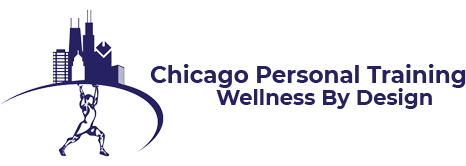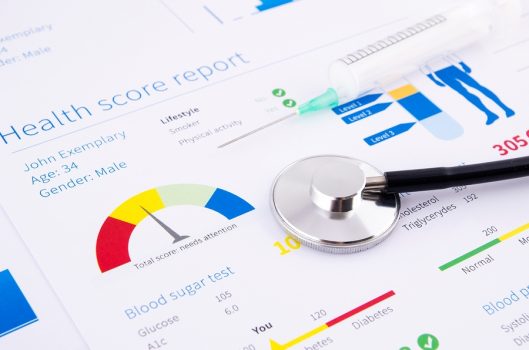
Health factors like blood pressure and cholesterol readings are an important part of designing a fitness program that is safe and effective.
Your blood pressure changes from day to day and even from moment to moment. For instance, it rises when you are active or excited and goes down when you rest or sleep. This is quite normal and nothing to worry about. In some people, however, blood pressure goes up and stays that way. When this happens, the person is said to suffer from high blood pressure.
What is Normal?
Blood pressure is measured at two phases of the heart’s action. One is when the heart is contracting. This is called “systolic” pressure. The other is when the heart is relaxing between beats. This is called “diastolic” pressure. Normal systolic blood pressure is about 120 and normal diastolic about 80. Your blood pressure is recorded with the systolic reading over the diastolic. For example, the reading above would be shown as ” 120 over 80″ or 120/80. In determining whether a person has a high blood pressure problem or not, doctors usually focus on the diastolic reading. People whose diastolic blood pressure stays at 90 or above, in repeated tests at different times, are usually considered to have some degree of high blood pressure.
Checklist for Blood Pressure Control
- Have your blood pressure checked regularly. Your primary care physician can tell you how often.
- Stop smoking.
- Avoid excessive salt intake.
- Eat more fresh fruits, vegetables, and foods high in fiber…and less fat.
- Reduce stress on and off the job; master relaxation techniques.
- Be moderate in your drinking.
- Exercise regularly and be sure to follow specific exercise guidelines for high blood pressure, and keep your weight within normal limits. If your doctor prescribes medication to lower your blood pressure, be sure to follow their directions exactly.
The Lowdown on Blood Pressure
Blood pressure is the force of the flowing blood against the walls of the arteries. It’s measured in two numbers. For for example, ‘140/90.’ The first number (140) is systolic pressure, the pressure when the heart contracts and pumps the blood through the body. The lower number (90) is diastolic pressure, the pressure between pumps, when the heart is resting 120/80 is considered normal. You may have high blood pressure (hypertension) if your blood pressure reading is equal to or greater than 140/90 for extended periods of time. Elevated blood pressure means your heart is working harder than normal, putting both your heart and arteries under a greater strain.
Only your doctor is qualified to diagnose whether you have high blood pressure or not.
How to Keep High Blood Pressure Under Control:
If you are diagnosed with high blood pressure, it’s extremely important that you follow your doctor’s treatment guidelines to the letter. These guidelines include keeping your diet low in fat, reducing your salt intake, quitting smoking, and limiting your alcohol consumption. In addition, you should exercise regularly, keep your weight within normal bounds, and learn to manage stress (instead of letting it manage you). Some recent research suggests that constant stress and pressure may predispose some men to continually elevated blood pressure later in life.
Cholesterol:
Cholesterol is only found in animal fats. It is essential in making sex hormones, and bile acids A blood level of less than 200 mg. is desirable. Although cholesterol is a fat, no calories are derived from it, because the body cannot break it down. You should limit yourself to no more than 300 milligrams of cholesterol a day.
Cholesterol is a waxy, fat-like substance (lipid). Although it’s often discussed as if it were a poison, it performs many essential bodily functions. “Cholesterol” is often a catch-all term for both the cholesterol you eat and the cholesterol in your blood. Cholesterol exists in food as a dietary lipid. You’ll find cholesterol only in animal products, such as meat and dairy foods. Cholesterol also exists in a different way as a natural component of your blood lipids. The cholesterol in your blood comes both from your liver and from the foods you eat. Your liver makes about 80 percent of your blood cholesterol.
Bad Cholesterol:
VLDLs convert to LDLs which are used by the body and removed. However, some people’s systems remove LDLs too slowly which causes LDLs to rise in the bloodstream. This slow tendency is hereditary! When the LDL blood levels become too high, the body tends to start depositing cholesterol and other fatty substances in artery walls. LDLs have, therefore, been called “the bad cholesterol” since they’re the cause of heart disease. When LDLs line the arteries, they cause atherosclerosis and start slowing the blood supply to vital organs.
Good Cholesterol:
HDL or ‘good cholesterol,” serve as the bloodstream’s “scavengers,” literally vacuuming up cholesterol and carrying it back to the liver to make into new VLDL or to remove it from the body via bile acids. HDLs, by removing cholesterol from the blood, decrease cholesterol damage to the arteries. The higher your HDL cholesterol, the lower your risk of developing heart disease.
Triglycerides:
Triglycerides area a type of fatty substance in the blood. Blood triglycerides levels tend to be elevated in people who have high cholesterol levels, especially in people who are obese, or those with chronic kidney disease or diabetes. Some studies suggest that high blood triglycerides might increase the risk of heart disease. But other research fails to link high triglycerides levels with heart disease. Ask your physician about therapy to lower your triglycerides. Dietary changes and weight loss can help most people or sometimes medication may be necessary to lower the triglycerides levels.
The Lower Your Ratio, the Lower Your Risk of Heart Disease
Improve your total cholesterol/HDL ratio by lowering your LDL cholesterol level, while raising your HDL level! You want to strive for an HDL level of 65 mg/dl or over. HDLlevels can be raised significantly by exercising, not smoking and leanness. Exercising regularly may also lower LDL cholesterol.
Contact Chicago Personal Training to get started on your fitness program;
Call 847-772-3487 or click on the link below for more information.
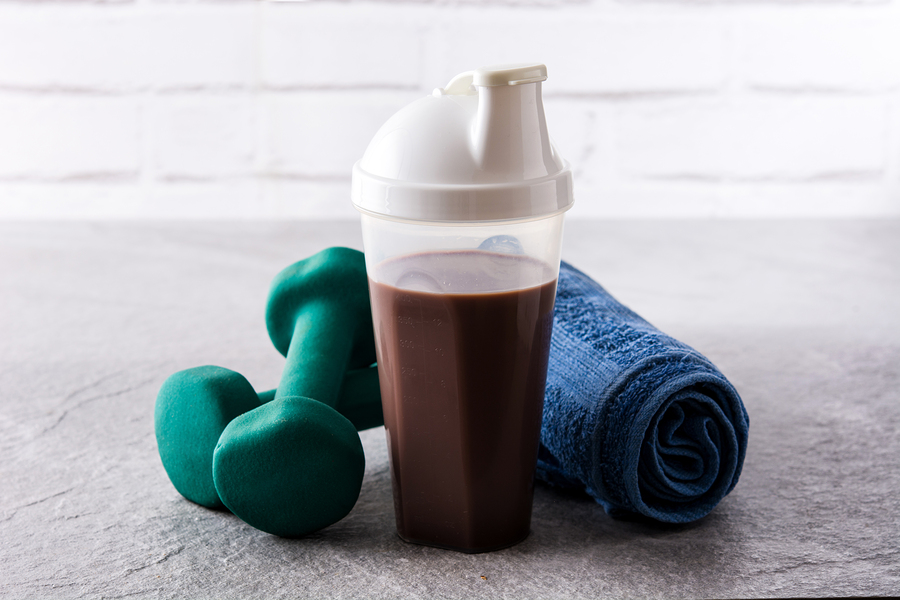

The Basics You Need to Know
Nutrition – Four sources of calories – carbohydrates, protein, fat and alcohol.
Calories per Gram – carbohydrates and protein have 4 calories per gram, alcohol has 7 calories per gram and fat has 9 calories per gram.
Minimal Needs – women need at least 1200 calories per day and men need a minimum of 1500 calories per day.
Water – your body is approximately 70% water. You need at least 64 ounces of water a day.
Basics of Balance
Strong bones and muscles are not the only things that help with balancing. Flexible tendons and ligaments help control joint movement and prevent injuries.
Exercise Improvements – when a person starts an exercise program, most improvements made during the first four to ten weeks are neuromuscular in nature.
Changing Control – many people exercise in a stable position. Try changing your body’s position when exercising. (e.g.) Doing a push up using a physio ball or doing a lunge with the front foot on a half cylinder.
Flexibility – spend more overall time stretching and hold your stretches longer. This will help improve your range of motion.
Info Commercials
Every year we spend hundred of millions of dollars for quick fix devices and supplements. You don’t need special nutritional supplements and fancy exercise equipment to get into shape……you only need time and commitment.
You Get What You Pay For – I once had a client tell me they found a great treadmill for five hundred dollars. I told them there was no such thing. Certain products are going to cost more, and you should get more in return.
Results Not Typical – ever notice that all info commercials have one thing in common? They all have the disclaimer (in small print) “RESULTS NOT TYPICAL”, so why would you want to buy a product where success is NOT the norm?
How Did They Get Those Great Bodies? – you see those fitness models with their perfect bodies demonstrating the latest and greatest in exercise equipment every time you turn on your television. Well, if this product just came on the market you know those fitness models did not use that product to get those great abs or arm muscles. Find out what they do for exercise and I’ll promise you it wasn’t the machine they’re demonstrating.
There are No Quick Fixes – if you are out of shape it did not happen overnight, so it is safe to assume that to get back into shape will not happen overnight. The best results are found with steady work.
Contact Chicago Personal Training to get started on your fitness program;
Call 847-772-3487 or click on the link below for more information.
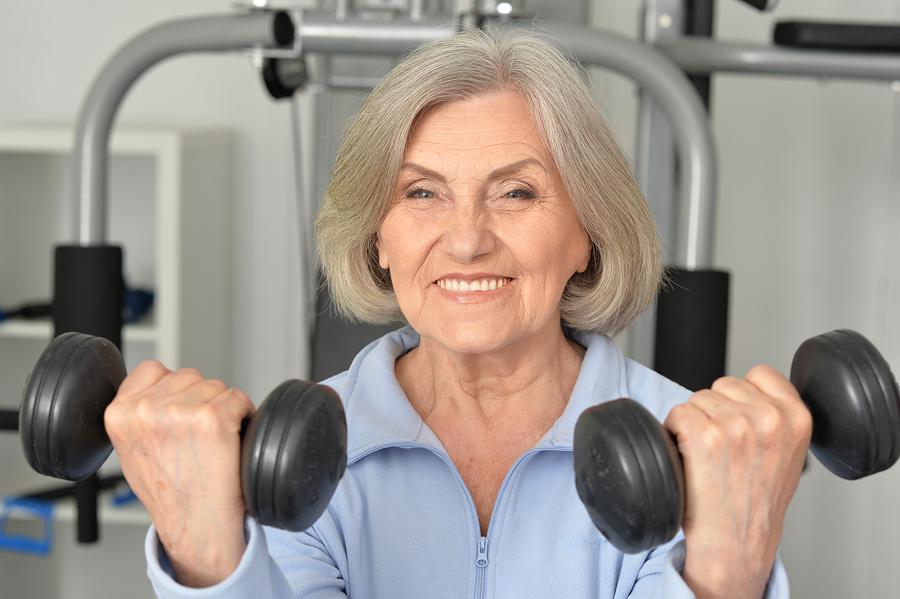

When you hear the words “power lifting” images of large, hulking men lifting hundreds of pounds of weights might come to mind. But power lifting is as much an everyday activity as it is a sport.
If you don’t consider yourself a weight lifter, or have never imitated a power lifter before, you would be mistaken.
Have you ever…
- Lifted your grandchild up and over your head?
- Gotten out of a chair without using your arms to help you stand up?
- Lifted a full golf bag out of the trunk of your car?
- Bent down to lift your grandchild off the floor to hold in your arms?
If you have done any of these movements, then you are a member of the power lifters society!
The benefits of exercising has long been known and promoted. Ongoing research continually supports the benefits of regular exercise.
One 12-month study conducted on postmenopausal women at Tufts University.
The test group demonstrated with just two days of progressive strength training each week achieved on average: 1% gain in hip and spine bone density, a 75% increase in strength and 13% increase in dynamic balance.
The control group, who did not participate in any regular exercise, had losses in bone, strength, and balance.
This study showed that strength training increases bone density and reduces the risk for fractures Strength training programs can also have a profound effect on reducing risk for falls, which translates to fewer fractures and debilitating injuries (Growing Stronger, Strength Training For Older Adults).
As you age, whether you are a man or a woman, there is an average loss of 0.5% bone
mass every year after age 50. One in two women and one in eight men will have an osteoporosis-related fracture in their lifetime (Osteoporosis (Low Bone Mass)).
Society still labels people by age group, instead of ability and functional needs. Older adults can participate and not just function in the world today by simply looking at power lifters to mimic everyday movements and activities.
Whether you are lifting a golf bag, a grocery bag or a twelve pound bundle of joy, your muscles function the same way. If you pick up and hold a weight, or move it enough times, muscles get stronger. A strong body is the difference between watching your grandkid play on the floor or you getting on the floor to play with them, being able to pick
up a two year old and hold them in your arms, or having enough energy to keep up with them all day.
“How old would you be, if you didn’t know how old you are?”– Leroy “Satchel” Paige
Age is in our mind, but it is also in our backs, knees, and elbows. Perception of pain is just as important as the perception of fitness. To feel fit, strong, and capable of achieving everyday tasks (let alone your fitness goals) is why power lifting is the key to your success.
There are some specific health issues that can affect the amount of weight you lift as well as how you lift it, so before you start any exercise or fitness program you should get a thorough physical from your doctor. Ideally, your next step would be to work with a personal trainer to learn how to lift properly. The difference between lifting weights correctly and hurting yourself can be a very fine line.
Designing your fitness plan should be as individualized as your doctor’s checkup. We all have the same bones and muscles, but everyone moves a little different and has various strengths and weaknesses. Before you begin lifting your grandkids up and over your head or moving furniture, you have to make sure your support system is set.
What is your support system? In terms of weight lifting, I am referring to the ability to balance, strengthening your core and rotor cuff muscles; and finally learning proper lifting technique.
Many publications will show you the various types of exercises that will help you with your power lifting. While these are good for future reference, I caution against relying on them without individual instruction. In my opinion, telling someone what to do without showing them first is only half of the equation. I encourage you to schedule time for a personal trainer who can analyze your movements and demonstrate the proper techniques and exercises you need to reach your goals. Focus on understanding what exercises will strengthen your body and will help you in realizing your fitness goals. Below is a list fitness tools that I use and recommend to my own clients.
Here is your “shopping list” of items that you want to achieve:
Balance
Everything starts with balance. Balance is the thing that children search for and adults lose. The ability to stabilize is what will give you confidence and actually make the item that you are lifting lighter. Balance is a neuromuscular effect that is also affected by audio and visual acuities. There are many techniques and tools that will help you improve your balance: standing on one leg, 1/2 cylinders or a Bosu. These devices will help improve your balance, but before you start using these devices, make sure you can perform your balance techniques with complete control on a flat stable surface- otherwise known as the floor.
Range of motion
No matter how strong you are, the ability to bend down to pick up an item takes flexibility. Loose quad muscles (the muscles in the front of your legs), and a strong, but flexible back will help you position yourself for any kind of lifting.
Control
The biggest difference between lifting and holding a 20 pound baby, and a 20 pound weight is that a baby moves. Being able to control a squirming baby is not only important to protecting your back, it is imperative for the baby’s safety. Holding a moving object takes arm strength, back strength and sometimes lots of patience.
Repetition
How often have you heard the term, “Practice makes perfect”? This is incorrect. Practice does not make perfect, “Perfect practice makes perfect.” Doing anything over and over incorrectly will not help you. Your body moves in patterns, whether it is walking, lifting weights or getting out of a chair. Proper movement of your body can be the difference between walking with confidence or being fearful of falling.
The help of a personal trainer can increase your ability to lift correctly and get stronger. Together you work on safely and progressively increasing your weight or repetitions over time.
Strength
Strength is a necessary component for a functional life. As you successfully combined balance, flexibility and control your strength will also improve.
Learning how to lift properly takes time and repetition. When you achieve these goals and employ them together you will have, along with the other benefits of regular exercise, the confidence and ability to be more active.
As you progress with your power lifting program you should feel confident that you have improved your quality of life. What was once a road block to participating in various activities, can now be a pathway to new and engaging accomplishments.
Works Cited
Growing Stronger, Strength Training For Older Adults. Tufts University, 2008. Web. 9 Aug. 2013.
Osteoporosis (Low Bone Mass). North American
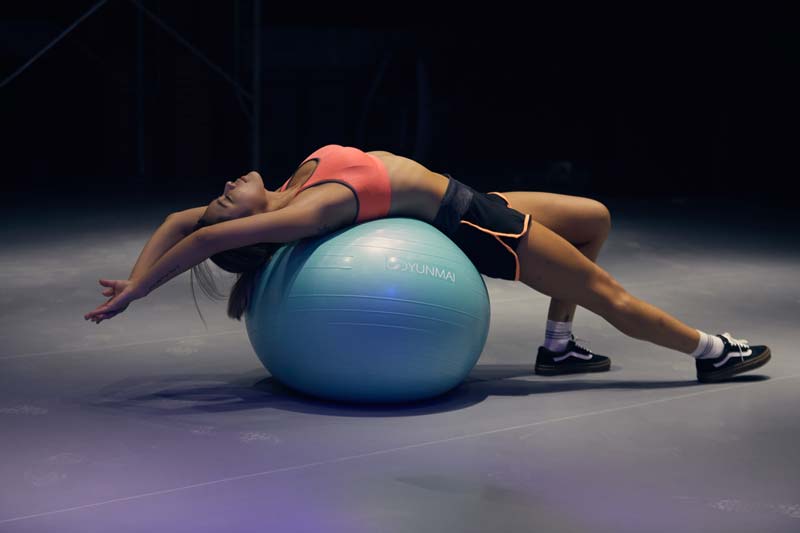

I enjoy watching television when I’m working out in my house. The fast forward button is my favorite feature on the remote control; anything to get past most commercials. Commercials used to be thirty to sixty second segments, now the commercials have become infomercials and are the show themselves.
A commercial is designed to do one thing, and one thing only; sell a product or an idea. After watching these infomercials over time I came to realize how imperfect, inadequate, uninteresting, nutritionally lacking, physically unchallenged and socially destitute my life was; or so they told me.
While watching one particular infomercial I found out how all my years of studying and hard work could be replaced with just 4 DVD’s, a 60 day bottle of pills (plus shipping and handling). One thing all infomercials seem to have in common are three little words found at the bottom corner of the screen; “Results Not Typical.” So why would anyone buy a product where success in not the norm?
These “shows” prey on our emotions and convey a high level of urgency. Before and after testimonials reveal stunning success and convince us that we too can be transformed.
If I sat and watch all the inspirational stories on TV and wished myself into good health and fitness I would never achieve my fitness goals. It’s impossible to do sitting motionless. Edison once said “Genius is 1% inspiration and 99% perspiration, the same can be said about health and fitness goals. Achieving your aspirations takes work, lots of work. But if someone made an infomercial about you, and all the time and effort that was dedicated to being successful, at the bottom of the screen the three little words would say “Results Are Typical,” and that is a product I would buy!


No Matter What Your Goal, Nutrition is Half Your Work
Whether you are trying lose weight, gain muscle, improve your immune system or your general health, good nutrition is half your work.
Protein does not build muscles; exercise builds muscles. Protein helps rebuild muscles that have been torn down by exercise (among its many other functions). If protein builds muscles by itself, everyone who ate at a McDonalds or Burger King would look like a body builder. The problem with protein diets is that too much protein is very hard on your kidneys. Most of the weight you lose at first is water weight. With these types of diets you also do not get the necessary fiber for a healthy colon.
Carbohydrates are your friend
No matter what you have read; weight loss (for the most part) is calories in and calories out. Unfortunately with all the media hype carbohydrates have been given a bad name. All types of carbohydrates (breads, vegetables, fruits) have been lumped together as the reason people gain weight. The reality is no one gained weight from eating apples and carrots. If you think fruits and vegetables are causing you to gain weight, keep a food diary for a few days and see how many of your carbohydrates are fruits and vegetables (apple pie does not count as a fruit). Your muscles store glycogen (sugar) in your muscles for energy. To get the most glycogen back into your muscles after a workout, make sure you eat within thirty minutes after your workout. The ideal snack would be a carbohydrate with some protein. (e.g.) smoothie with fruit and some protein powder; or plain yogurt with some fruit.
Fats
For many years fat had a bad reputation. But the understanding of the benefits for fats in our everyday diets has changed how we eat. There are many different types of fats. Saturated, Trans fat, Polyunsaturated, Monounsaturated as well as Omega 3 fatty acids. A healthy diet will minimize the saturated and trans fats, and focus on the Omega 3, polyunsaturated and monounsaturated fats. But be careful! All fats are high calorie, use them as part of a healthy diet, but in proper serving portions to the rest of your food program.
Water
You can’t talk about nutrition without discussing water. Water transports nutrition and carries out waste products from your body. If you are thirsty you are dehydrated. To truly re-hydrate your body takes a couple of days. The minimal amount of water you should drink per day is 64 ounces. Also, coffee does NOT count as water. Your body is composed of 70% water, not coffee.
With regards to exercise, water is critical for optimal performance. Water will actually keep your heart rate lower during an aerobic workout. How? Blood is mostly plasma, plasma is mostly water. When you are dehydrated your blood volume drops (Don’t forget when you are exercising you are using water for perspiration and breathing). Your heart has to work harder (beat faster) to raise the volume of blood. So that higher heart you see on your heart rate monitor is like spinning the wheels of your car. You’re putting out energy but the benefits are not the same compared to achieving that same heart rate because your muscles are working harder to move your body.
Food & Diary
Everyone hates to keep a food diary. They are a pain to keep but if you want success in your program, keep one. A food diary does not have to be about all the foods you ate. You can keep a diary of all the foods you avoided. Think of it as a rewards list, or you can keep a diary of only the foods you overate. Most importantly a diary should show you what aspect of your nutritional intake is important to you! Read our Weight Loss Programs post for more thoughts on food diaries.
Contact Chicago Personal Training to get started on your fitness program;
Call 847-772-3487 or click on the link below for more information.
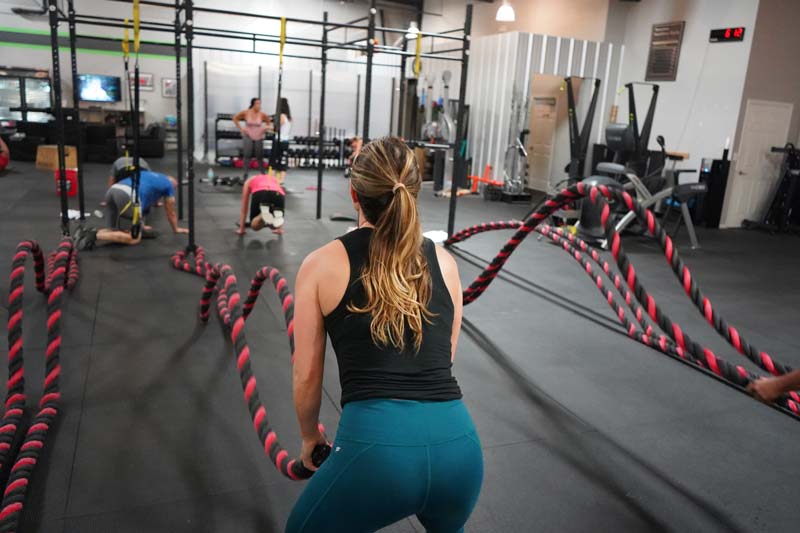

Sometimes I miss being a kid. The endless summers, the only aches and pains I had were from a skin knee, and if I fell down I would actually bounce right back up from the ground. There were many lessons I learned about life as a kid, but it’s not until I was an adult that I realized the full value and benefits from these lessons.
The play area – Ever notice where children play nowadays? When I was a kid you didn’t play on the couch or the chair, I played on the floor. Building with Tinker Toys, Lincoln Logs, or playing with a train set; all the fun stuff happened on the floor. My mom and dad with would get on the floor and help me build my imagination. The only things that usually happened in a chair in my house was eating and doing homework. Today for fun, kids usually sit in chairs or on the sofa for hours at a time playing video games. How much conversation and interaction is there between kids or grandkids when they are playing a video game? The lesson (or how to measure your fitness) is how you interact with your kids/grandkids. Are you tossing a ball, building a furniture fort or building a rocket ship to the moon with construction toys? You can judge your fitness level by how you get on and off the floor. If you have little kids or grandchildren you know that there is more interaction, happiness and fond memories playing on a living room floor than from watching from a chair.
Falling down – Falling down is a part of life, of course as a kid I usually would just stand back up and brush myself off. When I fall down now, I would start with a full body scan before moving to make sure all of our body parts (along with keys phone and glasses) are still working, followed by occasional sound effects declaring the great effort that is made to get up off the floor. The lesson is preventive. Sooner or later we all slip or trip, but practicing balancing exercises and techniques will minimize the risk of falling, and should be part of everyone’s workout program.
Self monitoring – Electronics – I remember going out to play ball with my friends and my mom telling me to be home in time for dinner. No cell phones to remind me or to track my every move, just the knowledge of getting “the look” if I was late; and that was enough motivation to keep me as aware of the time as a precision Swiss watch. The lesson in a world of electronic monitoring devices (smartphones, heart rate monitors, Fitbit watches), is that we lose the self-awareness abilities that’s in all of us. There are training methods that combine technology (heart rate monitors) and self-awareness techniques (ask your trainer for more information about this). The ability to self-monitor is more valuable to our health and fitness success than any electronic device.
Failing – The most successful people have learned this lesson well; succeed by failing. When we are little, our goal is to learn through experiences and failing. There’s usually not much harm in a little kid failing in numerous endeavors as they try to learn how accomplish various tasks. Obviously failing in your work as an adult can have serious ramifications. The lesson is not being afraid to take chances. If done correctly you can experience the risk of a new project and the thrill of success that can only be felt when there is risk involved. Being afraid to fail can lead to a lifetime of missed opportunities and adventures; and isn’t that what life is all about?
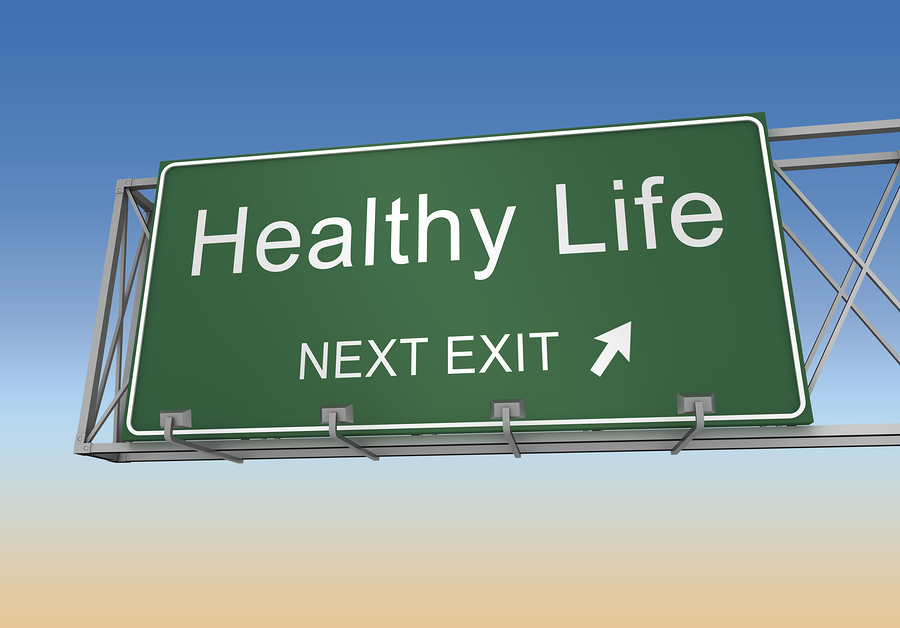

Investing in one’s future is not only a matter of money, but taking the time to take care of yourself. Saving up to enjoy the vacation of a lifetime can be two completely different experiences based on your physical fitness and health. Imagine the quality of your life that you can enjoy by being healthy.
- Improved quality of life
- Being a participant instead of an observer
- Reduced medication
- Increased personal savings through lower health care costs
To learn more about the benefits of good health and fitness and how it can affect your future, click on the topics below for more information.
Obesity Can Shorten Lifespan Up to a Decade
Seven Invisible Ways Exercise Improves Your Life
Health Rankings: USA is Living Longer, but Sicker
Contact Chicago Personal Training to get started on your fitness program;
Call 847-772-3487 or click on the link below for more information.
